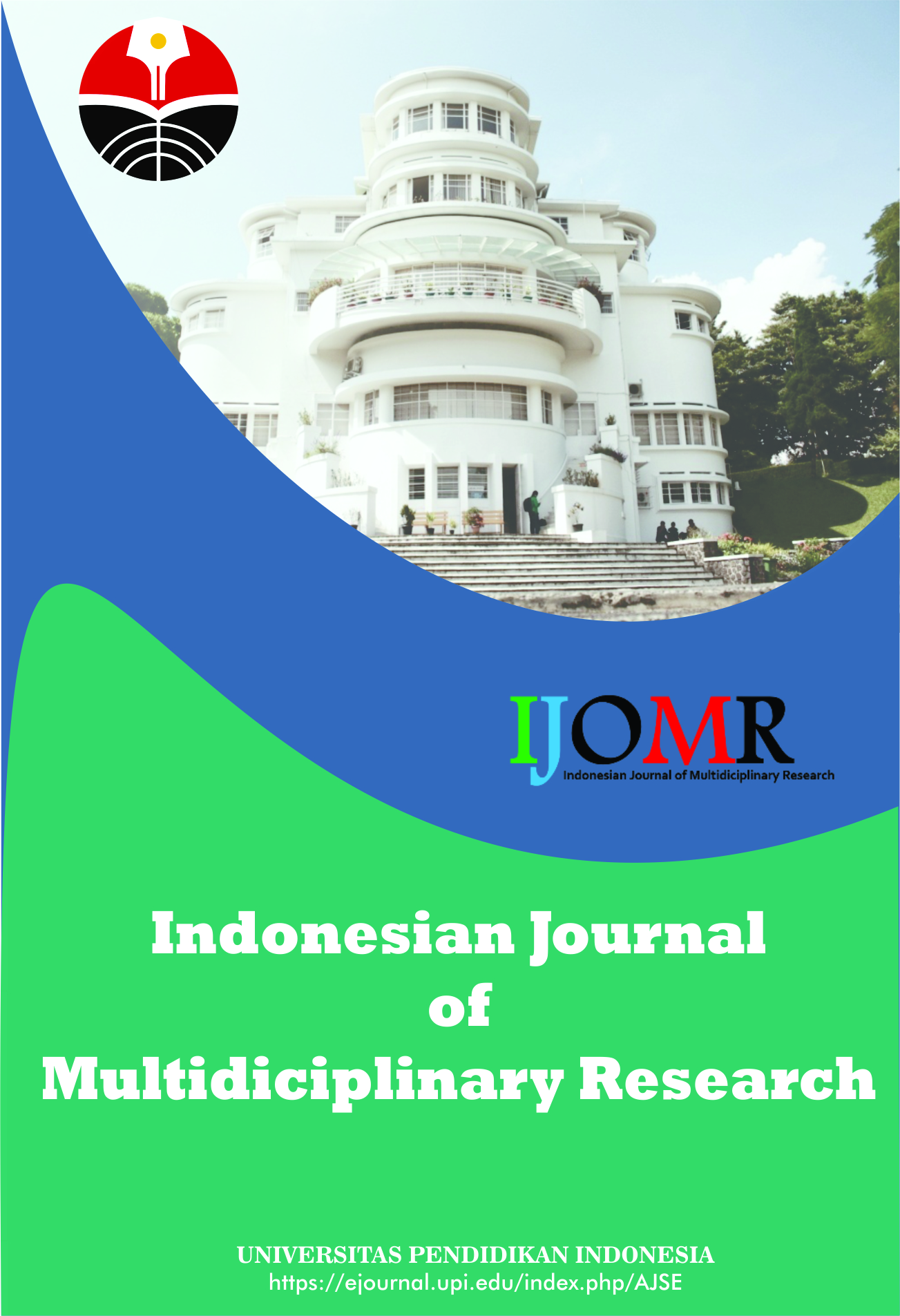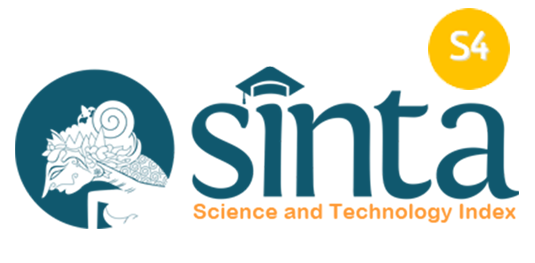Food Preferences and Nutritional Status: Insights on Nutrition Transition in University Community
Abstract
Keywords
Full Text:
PDFReferences
Ahmad, D., Afzal, M., and Imtiaz, A. (2020). Effect of socioeconomic factors on malnutrition among children in Pakistan. Future Business Journal, 6(1), 1-11.
Anik, A. I., Rahman, M. M., Rahman, M. M., Tareque, M. I., Khan, M. N., and Alam, M. M. (2019). Double burden of malnutrition at household level: A comparative study among Bangladesh, Nepal, Pakistan, and Myanmar. PloS one, 14(8), e0221274.
Asoba, G. N., Sumbele, I. U. N., Anchang-Kimbi, J. K., Metuge, S., and Teh, R. N. (2019). Influence of infant feeding practices on the occurrence of malnutrition, malaria and anaemia in children≤ 5 years in the Mount Cameroon area: A cross sectional study. Plos one, 14(7), e0219386.
Boah, M., Azupogo, F., Amporfro, D. A., and Abada, L. A. (2019). The epidemiology of undernutrition and its determinants in children under five years in Ghana. Plos One, 14(7), e0219665.
Bouvier, P., Papart, J. P., Wanner, P., Picquet, M., and Rougemont, A. (1995). Malnutrition of children in Sikasso (Mali): prevalence and socio-economic determinants. Sozial-und Präventivmedizin, 40(1), 27-34.
Cederholm, T., Jensen, G. L., Correia, M. I. T. D., Gonzalez, M. C., Fukushima, R., Higashiguchi, T., Blaauw. R., Coats. A. J. S., Crivell. A. N., Evans. D. C., Gramlich. L., Fuchs-Tarlovsky. V., Keller. H., Llido. L., Malone. A., Mogensen. K. M., Morley. J. E., Muscaritoli. M., Nyulasi. I., Pirlich. M., Pisprasert. V., de van der Schueren. M. A. E., Siltharm. S., Singer. P., Tappenden. K., Velasco. N., Waitzberg. D., Yamwong. P., Yu. J., Van Gossum. A., Compher. C., and GLIM Core Leadership Committee, GLIM Working Group. (2019). GLIM criteria for the diagnosis of malnutrition–A consensus report from the global clinical nutrition community. Journal of Cachexia, Sarcopenia and Muscle, 10(1), 207-217.
Choi, S. R., Lee, Y. K., Cho, A. J., Park, H. C., Han, C. H., Choi, M. J., Koo. J. R., Yoon. J. W., and Noh, J. W. (2019). Malnutrition, inflammation, progression of vascular calcification and survival: Inter-relationships in hemodialysis patients. PLoS One, 14(5), e0216415.
Cowardin, C. A., Ahern, P. P., Kung, V. L., Hibberd, M. C., Cheng, J., Guruge, J. L., Sundaresan. V., Head. R. D., Barile. D., Miils. D. A., Barrat. M. J., Huq. S., Ahmed. T., and Gordon, J. I. (2019). Mechanisms by which sialylated milk oligosaccharides impact bone biology in a gnotobiotic mouse model of infant undernutrition. Proceedings of the National Academy of Sciences, 116(24), 11988-11996.
Dreher., Michele. M., Ronda. G., Hughes., Patricia. A. Handley., and Abbas. S. Tavakoli. (2019). Improving retention among certified nursing assistants through compassion fatigue awareness and self-care skills education. Journal of Holistic Nursing, 37(3), 296–308.
Engle., Patrice. L., and Patricia. D. Fernández. (2010). INCAP Studies of Malnutrition and Cognitive Behavior. Food and Nutrition Bulletin 31(1):83–94.
Fongar, A., Gödecke, T., and Qaim, M. (2019). Various forms of double burden of malnutrition problems exist in rural Kenya. BMC Public Health, 19(1), 1-9.
Fujiwara, A., Minakuchi, H., Uehara, J., Miki, H., Inoue‐Minakuchi, M., Kimura‐Ono, A., Nawachi. K., Maekawa. K., and Kuboki, T. (2019). Loss of oral self‐care ability results in a higher risk of pneumonia in older inpatients: A prospective cohort study in a Japanese rural hospital. Gerodontology, 36(3), 236-243.
Humbwavali, J. B., Giugliani, C., Nunes, L. N., Dalcastagnê, S. V., and Duncan, B. B. (2019). Malnutrition and its associated factors: A cross-sectional study with children under 2 years in a suburban area in Angola. BMC Public Health, 19(1), 1-11
Kar, B. R., Rao, S. L., and Chandramouli, B. A. (2008). Cognitive development in children with chronic protein energy malnutrition. Behavioral and Brain Functions, 4(1), 1-12.
Larson‐Nath, C., and Goday, P. (2019). Malnutrition in children with chronic disease. Nutrition in Clinical Practice, 34(3), 349-358.
Maehara, M., Rah, J. H., Roshita, A., Suryantan, J., Rachmadewi, A., and Izwardy, D. (2019). Patterns and risk factors of double burden of malnutrition among adolescent girls and boys in Indonesia. Plos One, 14(8), e0221273.
Modjadji, P., and Madiba, S. (2019). The double burden of malnutrition in a rural health and demographic surveillance system site in South Africa: A study of primary schoolchildren and their mothers. BMC Public Health, 19(1), 1-11.
Nisar, Y. B., and Dibley, M. J. (2014). Determinants of neonatal mortality in Pakistan: secondary analysis of Pakistan Demographic and Health Survey 2006–07. BMC Public Health, 14(1), 1-12.
Polak, R., Reilly, J. M., Elson, L. E., Gallegos-Kearin, V. C., Bhatnagar, S., Schneider, J. C., and Silver, J. K. (2019). Nutrition Education Services Described on National Cancer Institute (NCI)-Designated Cancer Center Websites. Journal of Cancer Education, 34(5), 860-864.
Sawaya, S. M. (2006). Malnutrition and poor academic performance: critical contributions. Estudos Avançados, 20, 133-146.
Singh, S., Srivastava, S., and Upadhyay, A. K. (2019). Socio-economic inequality in malnutrition among children in India: An analysis of 640 districts from National Family Health Survey (2015–16). International Journal for Equity in Health, 18(1), 1-9.
Swinburn, B. A., Kraak, V. I., Allender, S., Atkins, V. J., Baker, P. I., Bogard, J. R., and Dietz, W. H. (2019). The global syndemic of obesity, undernutrition, and climate change: The Lancet Commission report. The Lancet, 393(10173), 791-846.
Tebeje, N. B., Biks, G. A., Abebe, S. M., and Yesuf, M. E. (2019). Parent’s food preference and its implication for child malnutrition in Dabat health and demographic surveillance system; community-based survey using multinomial logistic regression model: North West Ethiopia; December 2017. BMC Pediatrics, 19(1), 1-10.
Tekile, A. K., Woya, A. A., and Basha, G. W. (2019). Prevalence of malnutrition and associated factors among under-five children in Ethiopia: evidence from the 2016 Ethiopia Demographic and Health Survey. BMC Research Notes, 12(1), 1-6.
van Cooten, M. H., Bilal, S. M., Gebremedhin, S., and Spigt, M. (2019). The association between acute malnutrition and water, sanitation, and hygiene among children aged 6–59 months in rural E thiopia. Maternal and Child Nutrition, 15(1), e12631.
Zysman, M., Burgel, P. R., Brinchault-Rabin, G., Nesme-Meyer, P., Surpas, P., Deslée, G., Perez. T., Rouzic. O. L., jebrak. G., Chanez. P., Paillasseur. J. L., Caillaud. D., Roche. N., Burgel. P. R., Deslee. G., Surpas. P., Rouzic. L., Perez. T., Roche. N., Brinchault-Rabin. G., Caillaud. D., Chanez. P., Court-Fortune. I., Escamilla. R., Jebrak. G., Nesme-Meyer. P., Zysman. M., Pinet. C., and Roche, N. (2019). Relationship between gender and survival in a real-life cohort of patients with COPD. Respiratory Research, 20(1), 1-5.
DOI: https://doi.org/10.17509/ijomr.v2i1.39039
Refbacks
- There are currently no refbacks.
Copyright (c) 1970 Kantor Jurnal dan Publikasi, Universitas Pendidikan Indonesia (UPI)

This work is licensed under a Creative Commons Attribution-ShareAlike 4.0 International License.
Indonesian Journal of Multidiciplinary Research (IJOMR) is published by Universitas Pendidikan Indonesia (UPI)















